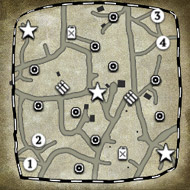none of this actually increasing the drop rate the whole point is you are suppose to be excited when you get a new drop as you have teh potential to get somthing cool. not another mundane button you have to click at the end of a match.
It increases the drop rate in an abstract view.
I really dislike the current system, because it allows extremes or outliers. Assume every person gets 1000 random drops and you then measure the amount of different drops you will get a normal distribution. There is some value X, let's say it's 500 different items in this case which most people will have. The numbers right next to it, 499 and 501 are the ones which have the second most amount of people in the group. The further you move away from the 500, the less people will be in the group. So there are a few people who might have 100 or 900 useful items. And there might be someone who has one 1 useful item or one who has only useful items - normal distributions. The further you go away from the average, the less likely, but not impossible.
That's why in most computations you do not use random numbers, but pseudorandom numbers. In a slightly more abstract way what they do is the following. There are two groups of actions, A (useful item) or B (duplicate). You have a different chance for each action to happen depending on the size of the group. Let's say we have 600 (equally weighted) items and you already have 100. In a normal system that would mean you have group A with (500/600) and group B with (100/600). Upon choosing a group it then selects a random item out of that group. If it's group A it will remove it from the group and add it to B.
A pseudorandom generator will not start with such numbers, but will have a lower chance for the positive result, so instead of 5/6 and 1/6 it will maybe be 5/10 and 5/10. Then when the negative result happens it will increase the probability of the positive one.
P(A) = 5/10 and P(B) = 5/10 Turn 1
P(A) = 6/10 and P(B) = 4/10 Turn 2
P(A) = 7/10 and P(B) = 3/10 Turn 3
...
P(A) = 10/10 and P(B) = 0/10
At some point it will make the positive result have a 100% chance, so it must happen. Once this happens the base probabilities start in the beginning again (so assume A happened), then it'S
P(A) = 499/1000 and P(B) = 501/1000 Turn 1
...
This basically decreases the chance of constantly having A or B happening and minimizer the outliers.
This is personally what I dislike most about the system. The duplicate drops itself are not great, but that it can be really unfair is something I despise. Adding a use for the duplicates might help to a degree, but this flaw will still be in the system.










 Failure is always an
Failure is always an 
 It's a happy
It's a happy 

 To make most awesome thing in universe combine
To make most awesome thing in universe combine 
 and remember kids, we didn't start the
and remember kids, we didn't start the 










 cblanco ★
cblanco ★  보드카 중대
보드카 중대  VonManteuffel
VonManteuffel  Heartless Jäger
Heartless Jäger 